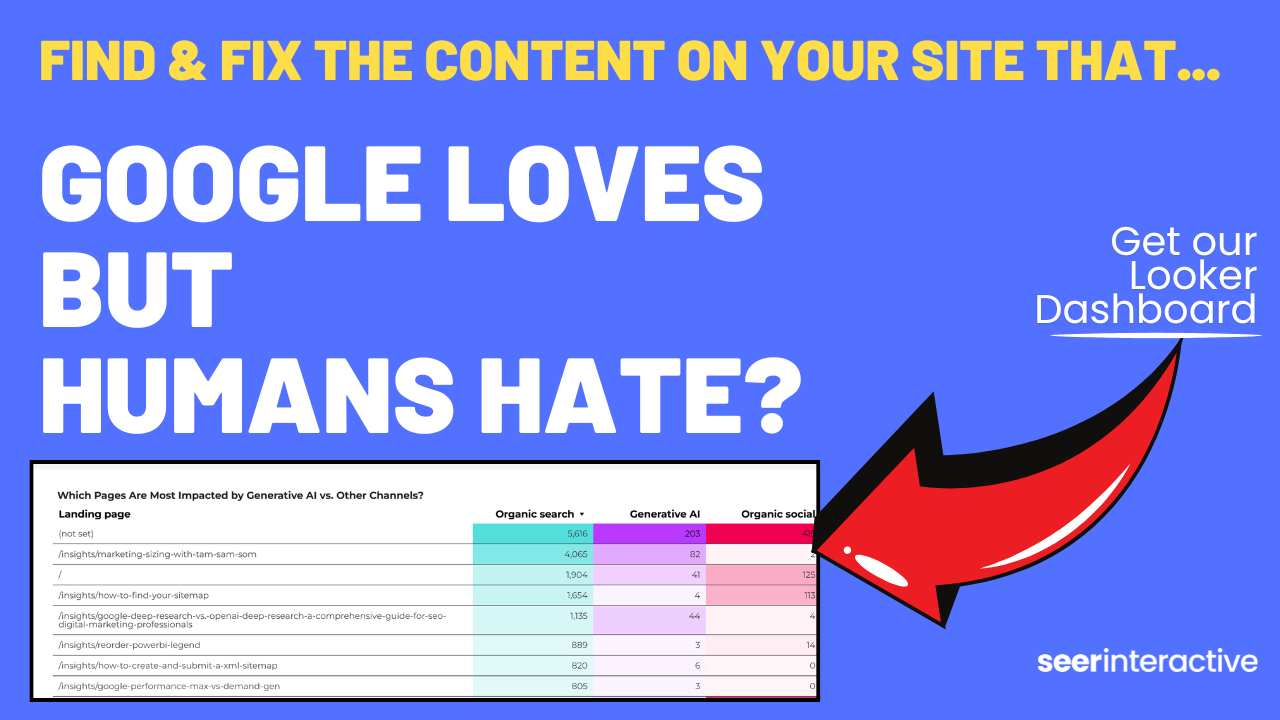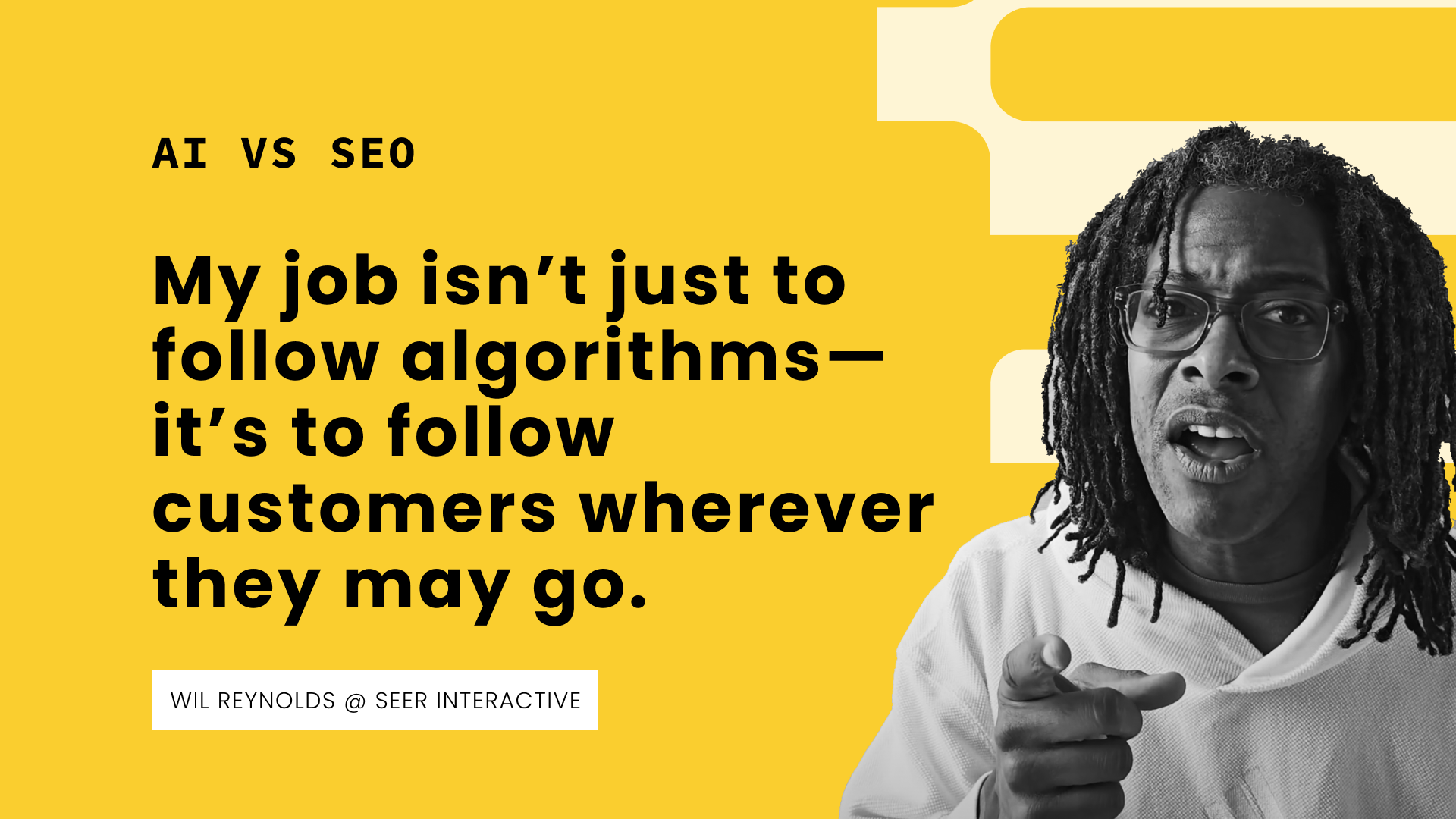Since launching AI Overviews (AIOs) in May, these generative AI search features have been top of mind for search marketers to understand how these new features can impact organic and paid search efforts. While benefiting the users by immediately providing information that doesn’t require a click, AIOs disrupt the traditional search behavior of users.
As the interest in AIOs has risen, so have the questions surrounding them:
- How do AIOs impact organic and paid search click-through rates?
- How does the CTR shift if my brand is mentioned in the AIO?
- What types of queries trigger AIOs?
- Should I optimize my content for AIOs?
Back in June Alisa Scharf, our VP of SEO + Generative AI, shared 4 initial performance insights we discovered after partnering with Ziptie.dev’s AI Overview data. Since then, we’ve set up AI Overview tracking for 100+ clients and monitor 7,800+ queries in order to investigate those common questions.
Now that we have over 2 months of Ziptie data to dig into, we connected the AIO metrics with Google Search Console and Google Ads to identify the initial impact on search performance.
So, what impact do AI Overviews have on click-through rates?
1. Paid CTR decreased 12pp when an AIO was present in the SERP

When an AI Overview appeared in search results, paid ads saw a significant drop in click-through rate:
- Paid CTR without AIO present: 21.27% CTR
- Paid CTR with AIO present: 9.87% CTR
AI Overviews were only present in 7% of our paid dataset, and 2.2% of total impressions, indicating that ads and AIOs are rarely paired in the search results. When they do, paid CTR nearly halves, suggesting AIOs may shift user behavior and distract clicks that otherwise go to paid ads.
2. Organic CTR declined ~70% when an AIO was present on the SERP

There is a significant decrease in organic CTR when an AI Overview is present in the search results:
- No AI Overview present: 2.94% CTR
- AI Overview present: 0.84% CTR
The average organic position for both groups was similar (5.9 vs 5.6) indicating the organic ranking was not a primary factor in the CTR differences.
3. Organic CTR increases to 1.08% when included as an AIO source
.png?width=1080&height=1080&name=Organic%20CTR%20declined%20~70%25%20when%20an%20AIO%20was%20present%20on%20the%20SERP%20(2).png)
Being featured as an AIO source appears to boost CTR incrementally:
- Client was included as AIO source: 1.08% CTR
- Client not included as AIO source: 0.6% CTR
Unfortunately, because Google hasn’t shared specific click data for AI Overviews, we can’t definitively say whether the AI-generated summary or the traditional link below it is driving more clicks.
However, being featured as a source does lead to an additional link in the search results, so we can conclude that inclusion enhances overall visibility which leads to a higher click-through rate.
(Plus, as an SEO I’m not one to complain about extra visibility in the SERP)
How can we identify queries that are leading to AI Overviews?
While AI Overviews typically appear for informational-intent queries, defining an "informational query" can be subjective. Google mentions that AI Overviews assist with your most complex questions, but how can we identify these queries at scale?
After comparing the queries that led to an AI Overview with those that didn't, two types stood out: question-based queries and longer queries.
4. 31.6% of queries with an AIO present were questions

Queries starting with "what," "how," “why”, and other question modifiers increased the likelihood of an AI Overview being present in the search results. 31.6% of queries with an AIO were in question form, compared to only 9.7% of queries that did not lead to an AI Overview in the search results.
The majority of question-based modifiers began with “what” (46%) or “how” (30%) indicating that users were interested in definitions or instructions. Other questions beginning with "why," "when," and "does" were less frequent but still led to an AI Overview in the search result.
[TIP] Review your search term report to identify if your ads are appearing for question-based queries, lowering your campaign's CTR.
5. Queries of 4+ words are more likely to lead to an AIO search result

The average query length leading to an AI Overview was 4.29 words compared to 3.48 words of a query not presenting an AIO.
This indicates that you’re less likely to run into AIOs when targeting head terms like “accounts payable services” but have an increased likelihood when targeting longer queries like “what is the difference between accounts payable and notes payable”
SEOs have anticipated the rise of conversational queries since the launch of virtual assistants in the early 2010s. Although the expected impact didn't translate into the impact some expected, AI may now drive the changes in conversational search behavior that was originally predicted for voice search.
[TIP] Monitor the average search term length in Google Ads and Search Console to assess whether users are shifting towards more conversational search queries.
So, is it worth trying to “optimize for” AI Overviews?
Cue the typical SEO answer: “it depends”.
Optimizing for AIOs will depend on your content strategy or what queries your campaigns prioritize. Having additional visibility for high-value keywords can be beneficial to brand awareness and organic performance.
Suppose you’re an insurance provider and increasing your general liability insurance product is a key objective in your content strategy. Your target users are likely asking questions about this product line, including “What does general liability insurance cover?”.
This phrase accounts for 5,400 monthly searches. If your page is already ranking on page 1 of the search results, having the additional visibility in the AI Overview can translate to 110+ additional clicks/month.
Similarly, if you work for Hummer, one of your main goals this year is to boost interest in the (more) environmentally friendly Hummer EV. Not only will creating content around this topic increase your visibility in search results this can also influence the information generated in AI Overviews.
What’s next?
At Seer, we recommend digging into your own data in order to specifically see how these changes in search behavior are affecting your performance and where to go from here.
Want to learn more? Get in touch with us If you’re interested in monitoring your AI Overview visibility and performance.


